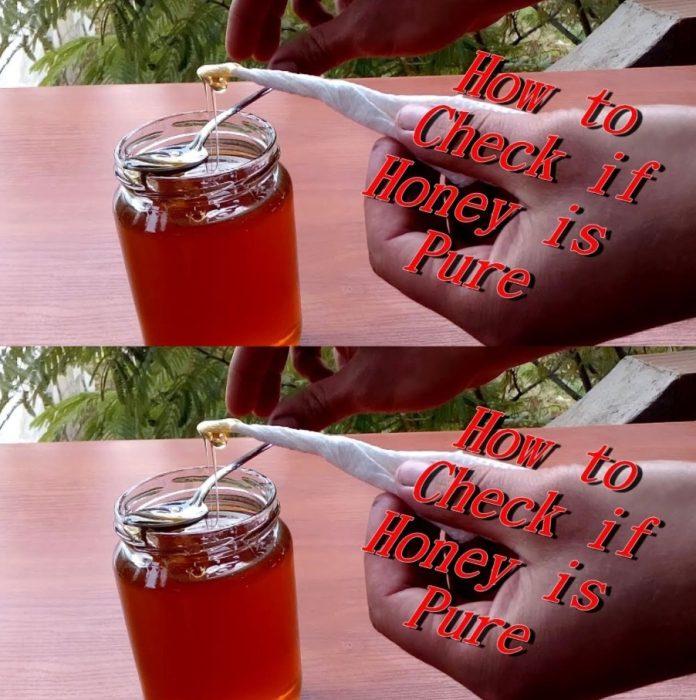Honey has been cherished for centuries, not just for its sweet taste but also for its myriad health benefits. However, with the rising popularity of this golden nectar, the market is flooded with products that may not be as pure as they claim. To ensure you’re getting genuine honey, it’s essential to know how to identify its purity. Here, we explore five simple methods to help you determine whether your honey is authentic.
1. The Water Test
One of the easiest and most accessible methods to check honey purity is the water test.
How to Do It:
- Take a glass of water and add a spoonful of honey.
- Observe how the honey interacts with the water.
What to Look For: Pure honey will settle at the bottom and not dissolve immediately, while adulterated honey will mix quickly with the water. This is because pure honey is dense and tends to clump together.
2. The Flame Test
This method is not only straightforward but also quite fun!
How to Do It:
- Take a cotton wick or a small piece of paper soaked in honey and try to light it.
What to Look For: If the honey is pure, the wick or paper should ignite easily and burn cleanly. However, if it’s adulterated with moisture or other substances, it may not catch fire or will produce a sooty flame. This test works best with honey that has a low moisture content.
3. The Vinegar Test
This method is particularly effective for detecting added sugars or corn syrup in honey.
How to Do It:
- Combine a tablespoon of honey, a tablespoon of water, and a few drops of vinegar in a bowl.
What to Look For: If you see bubbles forming, it’s a sign that the honey contains artificial sweeteners. Pure honey will not react with vinegar in this way. This simple test can help you discern the quality of your honey.
4. The Taste Test
When it comes to honey, nothing beats the palate.
How to Do It:
- Take a small spoonful of honey and savor its flavor.
What to Look For: Pure honey has a rich, complex taste that varies based on its floral source. If your honey tastes overly sweet, has a one-dimensional flavor, or leaves an aftertaste, it may contain additives or sweeteners. Authentic honey will leave a lingering sweetness without any unpleasant aftertaste.
5. The Crystallization Test
Crystallization is a natural process for pure honey.
How to Do It:
- Observe your honey over time.
What to Look For: Pure honey will crystallize over time, forming solid particles. This is especially true for raw honey, which is unprocessed. If your honey remains perfectly liquid for an extended period, it may have been heavily processed or contain additives that prevent crystallization.
Conclusion :
In a world where authenticity can often be overshadowed by marketing gimmicks and processed products, knowing how to check if honey is pure is more important than ever. Each of the five methods outlined—water test, flame test, vinegar test, taste test, and crystallization observation—serves as a practical tool in your quest for genuine honey. By applying these tests, you can ensure that what you’re consuming is not just sweet but also rich in nutrients and health benefits.
Pure honey is a natural powerhouse, packed with antioxidants, vitamins, and minerals that can enhance your overall well-being. It can serve as a natural remedy for ailments, a soothing agent for sore throats, and a healthier alternative to refined sugars. Moreover, supporting local beekeepers and choosing pure honey helps contribute to the sustainability of bee populations, which are vital to our ecosystem.
As you embark on your honey journey, take the time to savor its unique flavors and benefits. Remember that the best honey reflects the diversity of the flowers from which it originates, offering a taste of the local environment. By applying these simple tests, you can enjoy honey with confidence, knowing that you are indulging in a pure, wholesome product. So the next time you reach for that jar of golden goodness, put it to the test, and relish in the knowledge that you are making a choice that benefits both your health and the planet.
Source of the picture : Barbara O’Neill Lectures










